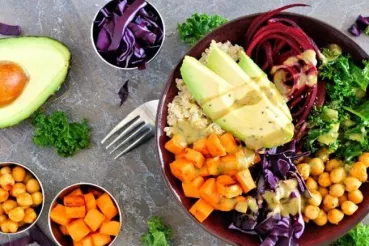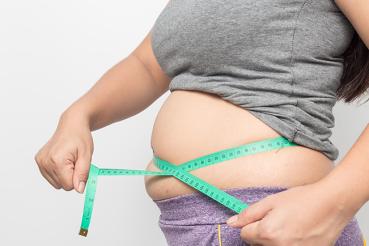You’ve probably heard that keeping your bones healthy as an older adult means getting plenty of calcium and vitamin D … but there’s a lot more to the story.
Kristin Gustashaw, MS, RDN, a Rush dietitian who has special expertise in working with older adults, shared some of her favorite tips. And these don't just apply to seniors. Everyone, at every age, can benefit from a bone-healthy diet.
1. Calcium isn’t just in dairy.
Beans and leafy greens, along with other foods like almonds, tofu and sardines, are all great non-dairy sources of calcium: 1.5 cups of cooked kale contain the same amount of calcium as an eight-ounce glass of milk.
Many plant-based alternatives to dairy milk have added calcium; the mineral is also found in fortified orange juice and breakfast cereals.
2. Add this surprising superfood to your diet.
They’ve been rebranded as “dried plums,” you probably know them as prunes, and Gustashaw is an enthusiastic evangelist for them.
“They’re dense with nutrients that contribute to bone health, and there’s a lot of research showing that eating them can slow the rate of bone turnover,” she says.
Eat five or six a day for a sweet, healthy treat.
3. There’s no need to load up on supplements.
“I’m a huge proponent of getting most of the nutrients you need from food,” Gustashaw says, so you may want to have a registered dietitian make recommendations before you consider adding supplements.
She makes an exception for vitamin D, since it can be difficult to get enough from food. She recommends a supplement of at least 600 IU daily for children and adults under 70 and 800 IU daily if you’re over 70, from a manufacturer whose label carries the USP-verified mark.
4. Micronutrients make a big difference.
Whole-food sources of calcium contain combinations of minerals and micronutrients — e.g., manganese, copper, boron and strontium — that help your body process calcium into strong bones.
If you’re running low on one important nutrient, magnesium, your calcium and vitamin D levels can be affected; Gustashaw recommends 420 mg per day for men and 320 mg per day for women from sources like broccoli and other dark green vegetables; dried beans and peas; whole grains like quinoa; pumpkin and sunflower seeds; cashews and almonds; and white or sweet potatoes.
5. You can get too much of a good thing.
Recent research shows that calcium supplements can be associated with soft tissue calcification — hardening in areas like arteries, joints and breast tissue.
“Get your calcium from food sources as much as possible rather than from supplements,” Gustashaw says, aiming for about 1,200 mg per day if you’re over age 51. Women ages 18 to 50, and men ages 18 to 70 need 1, 000 milligrams (mg) daily.
If you take antacids, be aware that some chewables, like Tums, can contain as much as 1,100 mg of calcium per tablet, making it easy to overload. And that calcium toxicity from supplements is a danger if you take more than 2,500 mg per day; it can cause symptoms like fatigue, abnormal heart rhythm, kidney stones, anxiety and confusion.
You can absorb only about 600 mg of calcium at a time, so (spread) out your intake throughout the day.
6. Talk with your doctor about medicines you’re taking.
A number of common medications can increase the rate of calcium loss in the body, which weakens bones. Some of the culprits include the blood thinner heparin, thyroid hormone, corticosteroids, diuretics and methotrexate.
Your doctor can help you make a plan for keeping your bones strong, including prescribing medications that prevent bone loss or stimulate bone formation if needed.
7. Spread out your calcium doses.
You can absorb only about 600 mg of calcium at a time, so Gustashaw suggests spreading out your intake throughout the day rather than washing down your multivitamin with milk or calcium-fortified orange juice in the morning.
Mix tofu and kale into your lunchtime soup, add beans to your dinnertime chili, or snack on a cup of low-fat or nonfat yogurt.
8. Eat the rainbow.
Many super-healthy foods like beans. wheat bran and leafy greens contain oxalic acid and phytic acid, which can affect how your bones absorb calcium — so eating a widely varied diet is essential. (Gustashaw’s top tip: Soaking dried beans overnight before cooking, and then cooking them in fresh water, removes much of their phytic acid.)
9. Caffeine, sodium and alcohol can leach calcium from bones.
Consuming high amounts of sodium (more than 5,100 mg per day), alcohol (more than three daily drinks) or caffeine (more than three daily cups of regular coffee) can contribute to bone loss by increasing your excretion of calcium.
“Everything in moderation!” Gustashaw says: One cup of regular brewed coffee causes a loss of only two to three milligrams of calcium.




